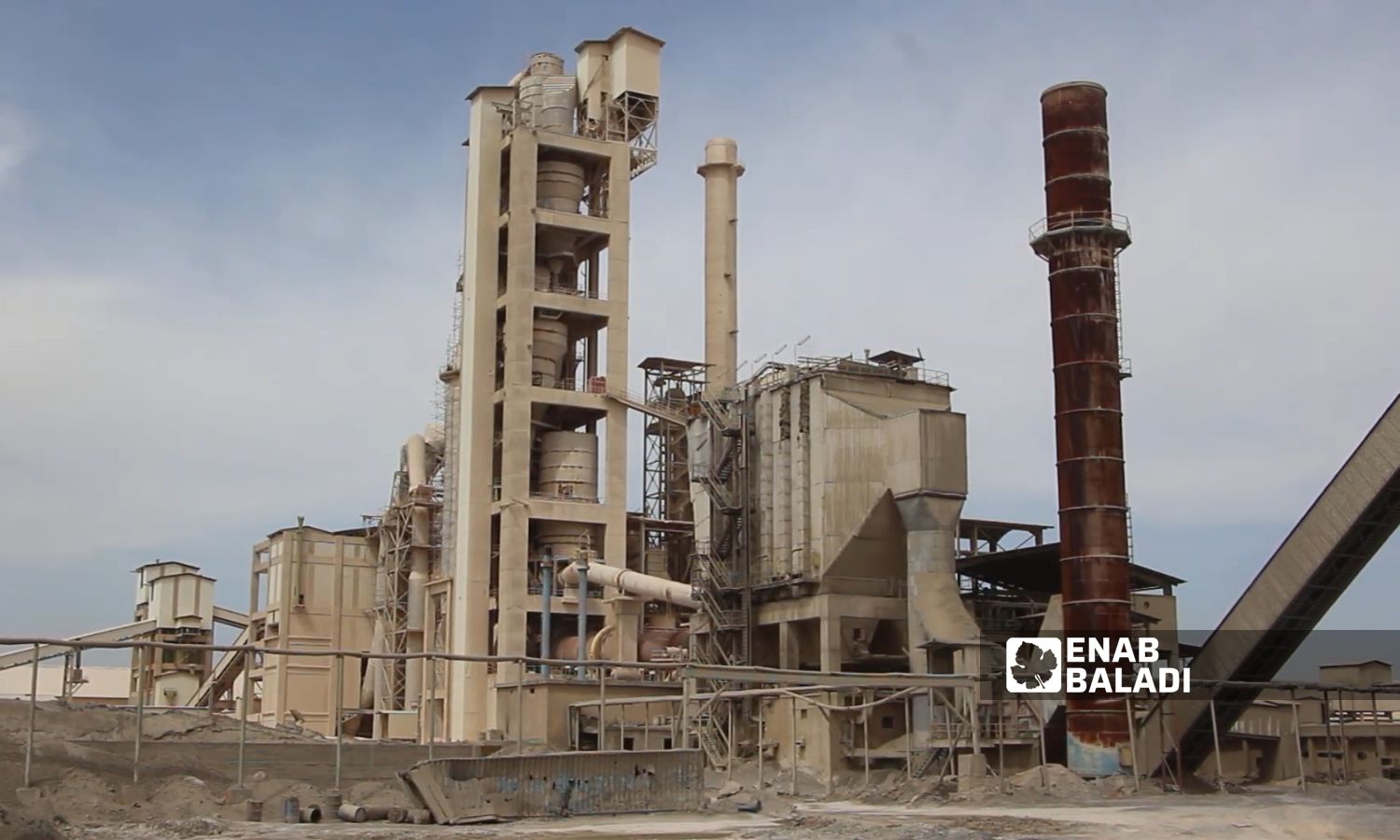



The Hama Cement Plant “Number 3” continues production after resuming operations on February 23rd, with its products sold in US dollars at prices described by the plant management as “suitable and competitive” compared to imported cement.
Engineer Ammar al-Sheikh, the plant’s operations manager, told Enab Baladi that the plant’s production capacity currently stands at 3300 tons per day, producing various types of cement, including Portland, blended, and sulfate-resistant cement.
He mentioned that the cement production process starts from the quarries, where there are two main quarries—one for limestone and the other for basalt—after which machines (crushers) break the stones, and then the materials are transported to mills, blended with sand and other materials, followed by the kiln for burning the incoming materials, then to the cement mill, and finally packing and selling to consumers.
Al-Sheikh added that the cement produced at the plant meets the standards set in Syria, with hourly monitoring of the production process.
Cement is sold in bags at a price of 107 US dollars per ton, or bulk (unpacked), with the price at 105 US dollars per ton, distributed by dealers to all provinces.
He explained that the plant is facing difficulties due to a shortage of spare parts due to sanctions imposed on Syria, compensating with locally made products of lower specifications, which tend to wear out quickly, while efforts are being made to bring in better parts.
The kiln operator at the plant, Ammar Awaire, described the plant’s operations as “modern and developed.” Through screens, one can monitor malfunctions within the plant and operate the entire section, tracking and maintaining all malfunctions that occur during the operation, with a central room leading the entire production process.
The plant ceased operations and production on December 5, 2024, and on February 23, it was fully operational again, relying on its skilled workers and carrying out some maintenance during the downtime.
The interest of locals to rebuild their homes remains weak due to high costs, as over 90% of Syrian families live below the poverty line, while at least 13 million people (more than half of the population) suffer from the inability to access adequate food or afford its cost, according to Human Rights Watch.
Syrians are finding it difficult to return to their destroyed towns and villages, and extensive sanctions negatively affect reconstruction efforts, with estimates suggesting that Syria needs more than 250 billion dollars for the reconstruction of the country, including infrastructure, basic services, and economic recovery.
if you think the article contain wrong information or you have additional details Send Correction